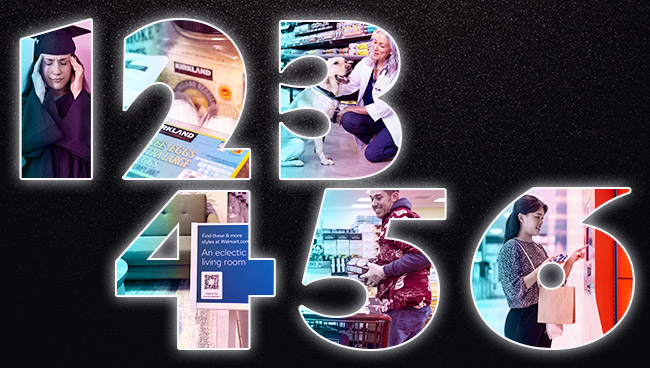With tighter spending everywhere around us, consumer preferences in 2023 will shape the retail in 2024 and beyond. We dove into our proprietary How America Shops® surveys of the past year and found six ways how consumer trend changes will more prominently influence retail and brand strategies in 2024 – and beyond.
Are Your Shoppers Showing You What They’re Telling Us?
In 2023, WSL Strategic Retail surveyed thousands of consumers for our proprietary How America Shops® reports and we toured hundreds of stores for our Retail Safari®. In the process, we analyzed topics ranging from the discretionary spending and brand loyalty to the features that define a “happy” store.
And, as always, we sought to learn shopper trends: what attracts them to one retailer over another, and what keeps them in the store.
As you can imagine, we uncovered lots of shifts in behavior, but when re-examined, we recognized that these behaviors could be grouped into six broader categories. So we repacked all of that research into this tidy year-end package for you.
How America Shops® Tomorrow: 6 Retail Trends for 2024

1. Retailers and brands should reconsider what consumers are buying right now.
The Pandemic is nearly three years behind us, but it was replaced by soaring inflation on basic goods and services. In October, 64% of shoppers told us they expect prices to continue to climb – that’s up 8 percentage points from just June! The result: 77% of all shoppers feel anxious about their personal finances, according to findings in our October “Caution: Retail Curves Ahead” report. A key reason is that more than half of all shoppers had less discretionary income than in 2022, or none at all. Anticipated college loan payments is one culprit, affecting one in three Gen Z and Millennial consumers. The result: shoppers will pass on products that showcase their values if they cost more, such as organics and vegan, but will prioritize pets and beauty.

2. Store brands have graduated to preferred brands.
Consumers no longer see store brands as a compromise to make ends meet. From Kroger’s Simple Truth to Target’s Cat & Jack, these brands are unseating national brands in look, performance and price. Three-quarters of shoppers told us that they’ve noticed improvements in both the quality and packaging of store brands over the past five years, according our August report, “Paradox of the New Shopping World.” Further, they believe store brands are just as innovative as national brands. The Private Label Manufacturers Association reports store brand sales rose 40% over the past five years, outpacing national brands. Retailers and national brands would do well to innovate with lower prices in mind.
3. Services are part of one-stop shopping.
Thanks to service innovations, consumers expect more than merchandise in stores and on retail websites. Walmart, which owns full-service, in-store clinics that provide easy access to X-Rays, dental checkups and lab work, in September opened its first pet center, offering healthcare and grooming (conveniently alongside a Walmart store). Lowe’s has partnered with Petco to house Vetco clinics, which provide vaccinations, microchipping and medications (our Retail Safari® Scouts visited this Petco-based Vetco clinic in March). And Amazon has extended wellness services from online pharmacy to virtual clinics. The daunting question retailers will face in 2024: Which merchandise do we replace with revenue-generating services?

4. A more urgent need to keep sales from roaming.
Roughly one in five shoppers told us they like to shop both the store and online for their regular stock-up trips and quick trips. Gen Z shoppers are significantly more likely to use both channels. Further, 60% of all shoppers use a retailer’s app or website to access promotions while in the store. As a result, our Retail Safari® Scouts have documented a boom in easy-to-scan QR codes in displays, giving customers the option to learn more about products or order them while standing in the store. In short, physical to digital shopping is fluid and a valued aspect of an easy trip. In 2024, fewer and fewer consumers will even recognize a barrier, and more will likely order hard-to-find products from an online competitor – while in your aisles – unless you post a digital option.

5. A sharper focus on employee mental health and happiness.
Employee mental health is a growing concern for the majority of all large employers, including retailers. According to an August report by Business Group on Health, 77% of all employers have recognized an increase in mental health issues among associates since the pandemic, and 16% expect to see an increase in the coming year. In a customer-facing industry like retail, the mental health and happiness of employees is especially critical for business. When choosing the most important features of an easy shopping trip, Boomers and Gen Xers rank happy associates high on their lists, according to our How America Shops® research[1].

6. Retailers must offer shopping anyway the customer wants it.
Shoppers can wake up expecting to go to the store, but then the day becomes busy and their plans change. Or rather, how they plan to shop changes. They can order online for pick-up in the store or at the curb. Or order the basics online for pickup and enter the store for a shorter time to browse their favorite departments. And along the way, they expect to get offers any way that suits them: digital coupons added to an app, sale prices accessed via a loyalty membership or digital circulars to allow pre-shopping online, with a paper circular in store serving as a reminder.
What Is the Future of Retail? We Know
Shopper sentiments about how wellness, finances and ease fit into the retail and brand experience continue to evolve, and we’re closely monitoring these changes. Visit our Shopper Research page for the latest How America Shops® reports, and our Retail Innovators page to review our Retail Safaris®, including virtual tours.



